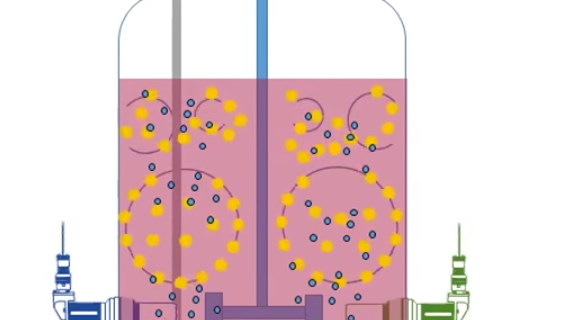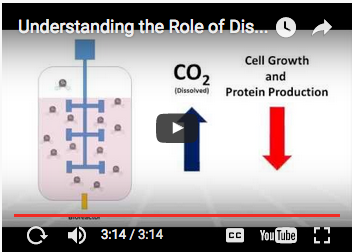
Video Tutorial – Understanding the Role of Dissolved Oxygen and Carbon Dioxide on Cell Culture in Bioreactors
Oxygen is a necessary component in cell respiration and cell division, hence it is critical that it be added to cell culture for maximum energy, protein production and cell growth. Carbon dioxide is a waste by-product of both cell respiration and cell division and if not properly managed can have negative effects on the culture. Both dissolved oxygen and carbon dioxide need to be controlled to prevent negatively impacting the pH of media and product quality. Dissolved oxygen has recommended operating range of approximately 30-40%. If dissolved oxygen levels get too high, protein degradation due to oxidation can occur. Likewise, if carbon dioxide gets too high it can cause reduced cell growth and protein production. Optimal operating range for carbon dioxide is approximately 5-10%. Dissolved oxygen and carbon dioxide probes are used to monitor the levels of both in bioreactors. To better understand the factors involved in managing dissolved oxygen and CO2, please see the video below titled, “Understanding the Role of Dissolved Oxygen and Carbon Dioxide on Cell Culture in Bioreactors.”
The Keck Graduate Institute and WuXi Biologics have teamed together to provide technical training videos called Two Minute Tuesday videos for the bioprocessing industry. They will deliver a new video topic every Tuesday that can quickly get you up-to-speed in understanding the complexities of biologics drug development and manufacturing.
